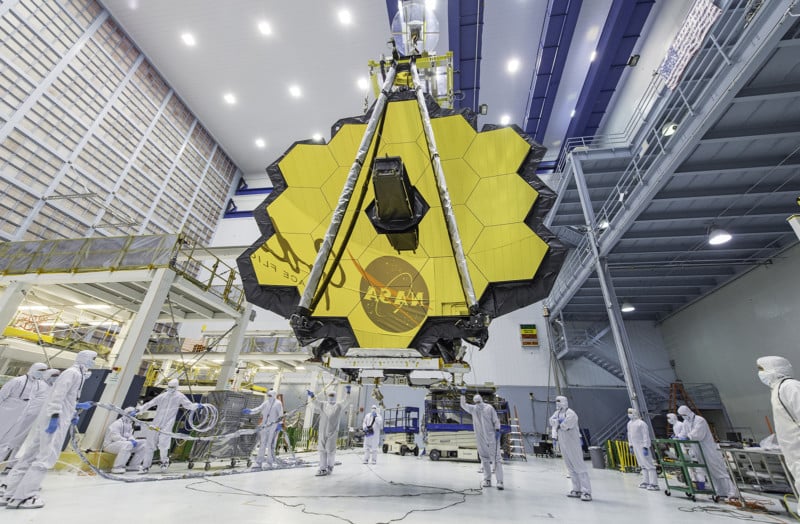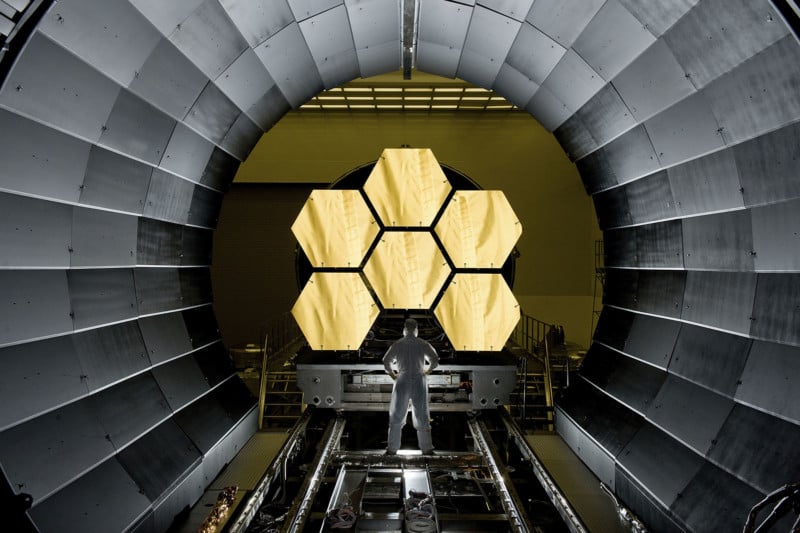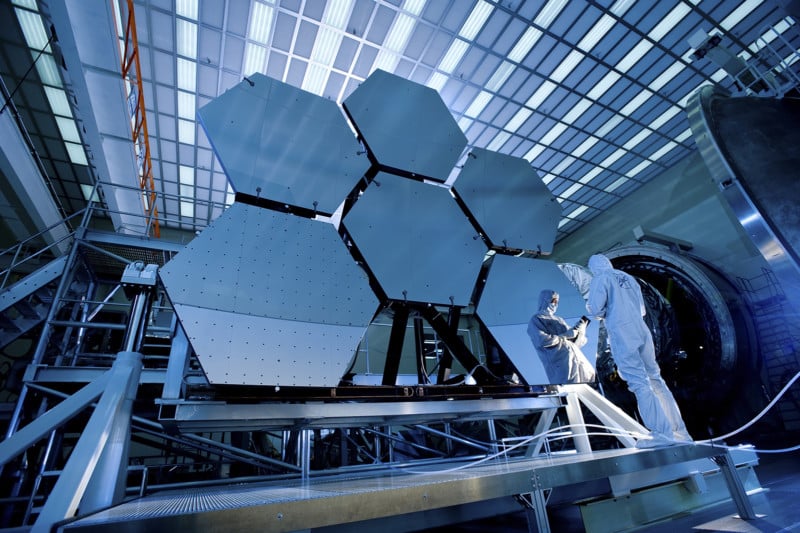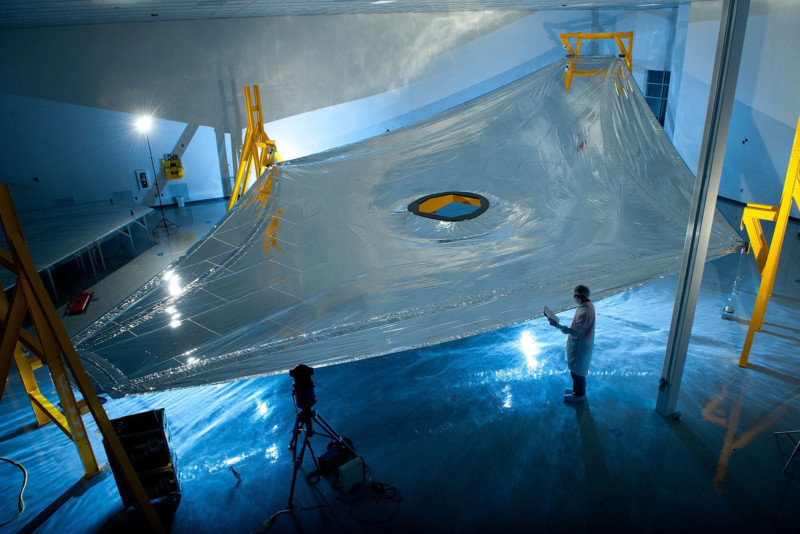Hour-Long Documentary Chronicles James Webb’s Journey Into Space
NOVA, a PBS award-winning science series, has premiered a new special that chronicles the James Webb Space Telescope’s journey into space through the capture of its first incredible photos.
The one-hour film titled Ultimate Space Telescope tracks more than two decades of development leading up to the launch of the James Webb Space Telescope in December 2021 and goes behind the scenes during what the documentarians call the “nerve-wracking, step-by-step process” of its deployment into space.
The documentary premiered at 9:00 PM EDT on PBS but is available to stream for free on NOVA’s YouTube Channel, the PBS video app, and on PBS.com.

As part of the launch of the documentary, NOVA shared nine fascinating facts about the telescope that are explained in the film:
1) The James Webb Space Telescope (JWST) is by far the largest and most powerful space telescope ever built. Weighing in at a whopping seven tons with a height of 28 feet. It casts a massive shadow over its predecessor, the Hubble Space Telescope featuring a mirror measuring 21 feet in diameter, which sits on top of a first-of-its-kind sunshield the size of a tennis court. Because of its size, scientists had to build the JWST so it folds up to fit inside the nose cone of the rocket, to be deployed once it enters space. It’s known as an “origami” telescope.
2) The JWST’s mirror is made up of 18 gold-plated segments that unfolded and adjusted to shape after its launch. Engineers used gold–a thin layer made up of less than two ounces across the mirror’s entire surface–because it is remarkably reflective for infrared light.

3) The JWST is an incredibly sensitive, high-precision instrument. While in space, the telescope needs to be kept at a frigid minus 394 degrees Fahrenheit. On Earth, it had to be kept impeccably clean: a single human hair could threaten the proper functioning of the telescope.
4) Humans have only been as far away from Earth as the Moon, but the JWST is stationed four times farther away. It’s about 3,000 times farther away from Earth than the Hubble Space Telescope. This statistic highlights the incredibly high stakes of the JWST mission: Unlike Hubble, the JWST telescope is too far away to be reached for upgrades or repairs.

5) The nearest galaxies are thousands of light years away, so images taken by Webb will show galaxies not as they are today, but as they were thousands, millions, and even billions of years ago. The telescope will allow astronomers to see deep “into the past,” revealing the farthest galaxies humans have ever observed.
6) It took more than two decades for the $10 billion telescope to make it to the launch pad. The monumental effort was made by the contributions from thousands of scientists and engineers, along with over 300 partners, from 14 countries and 29 U.S. states.

7) Originally scheduled to launch in 2007, the JWST mission was stalled by heavy cost overruns, failed tests, and even a natural disaster. When Hurricane Harvey devastated Houston in 2017 in the midst of a crucial test, the storm threatened the scientists’ access to power and electricity—yet they persevered.
8) The JWST mission is incredibly risky. Scientists identified 344 single points of failure during the launch and deployment phase of the telescope—that is, 344 points at which the machine had to perform perfectly, or else the entire telescope would not function. Countless pins needed to release, latches had to lock into place, and hundreds of mechanisms needed to deploy. After rigorous testing, the mission successfully launched on Christmas Day 2021 and set off on a direct path to an orbit approximately one million miles from Earth.

9) Early images designed to test the functionality of the telescope have hinted at its power. For example, one image focused on a nearby star within our Milky Way galaxy, but the telescope’s instruments are so sensitive, the image revealed never-before-seen galaxies in the background.

“Working with NASA to document this mission has been incredibly exhilarating,” Nova Producer Terri Randall of Randall Productions says.
“Like any great endeavor, there were many setbacks in creating this revolutionary telescope, so it was important that we show how challenging the two decades leading up to the launch and deployment were for the JWST team. I am thrilled to tell their story and to now have the opportunity to be alongside them on July 12, capturing the moment NASA reveals the mission’s first images.”
Ultimate Space Telescope is the first of two films NOVA has planned. A second is currently in production and is set to premiere on PBS in early 2023. That film will delve even deeper into Webb’s discoveries — following its developments in the upcoming months — and will reveal what they could mean for our understanding of the universe.